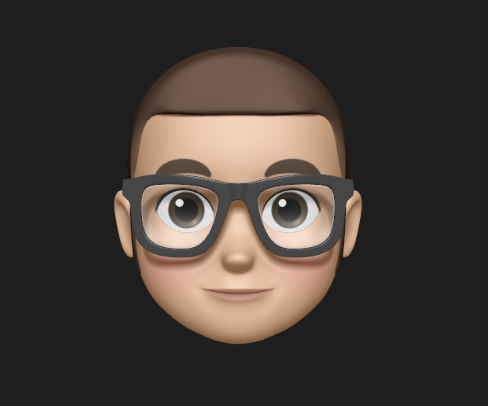 Freelancer tips
Freelancer tips WeTransfer: What is it and how to use it to share files
WeTransfer is a tool that lets you send large files quickly and securely. If you don’t know how to use it, read on—we’ll explain.



There are many visual tools that can be incredibly valuable for freelancers. We're talking about graphics like Venn diagrams, a strategic resource that helps clarify where we want to focus our efforts.
If you're not sure what a Venn diagram is or what you can achieve with this tool, read on.
A Venn diagram is a type of chart made up of overlapping circles that display the relationships between two or more elements.
Similar to flow diagrams, Gantt diagrams, or Ishikawa diagrams, this model allows information to be represented visually. In this case, it does so through circles, where each one contains different data.
The area where the circles overlap indicates the common aspects of the sets, while the non-overlapping sections represent their differences.
Venn diagrams are used for strategic planning and problem analysis. They are as useful for decision-making as a SWOT Analysis.
These schemes can be fundamental in your freelance career for comparing and checking different skills, projects, or markets.
To be more precise, they can help you:
Facilitate decision-making and strategic planning. These types of diagrams act as a starting point, similar to a mind map, allowing you to visualize how the aspects of your work relate to your skills. You'll be able to identify those overlapping and opportunity areas to plan and make better decisions.
Organize information. They provide a clear and simple way to arrange data, making them an ideal tool for facilitating strategic decision-making.
Analyze and distribute projects. They help visualize the similarities and differences between various projects, facilitating efficient resource distribution and helping prioritize tasks to better manage your time and effort.
In summary, Venn diagrams are useful for organizing data and facilitating decision-making.
The Venn diagram is a versatile tool, meaning it can be applied in a variety of contexts to enhance efficiency.
We break down each of the questions:
When to Use a Venn Diagram?
When you need to evaluate your skills against market needs.
At the start of a new plan to identify resources and needs.
When issues of interest arise between projects or clients.
When you need to create your proposals for clients or when presenting your services.
Where to Use a Venn Diagram?
During brainstorming sessions.
In market assessments.
When preparing reports for clients or documenting your work processes.
In marketing and communication tools, such as websites or presentations.
The simplicity and clarity of the Venn diagram make it an excellent tool for making the invisible visible by organizing complex information for better understanding by you, your clients, and collaborators.
The Venn diagram is distinguished from others by its unique ability to:
Detect how many sets are related in a specific topic and what each represents.
Facilitate existing connections between the sets, indicating how they interrelate.
Determine to which of the sets each element belongs. Sometimes, it can clearly show intersections between elements that share common characteristics with more than one set.
Define if there are elements that do not belong to any set. This is crucial for conducting a thorough and comprehensive analysis of the topic.
This only reaffirms that the Venn diagram is extremely useful, especially when looking to organize and present data to understand its relationships and differences more easily.
These schemes can be classified into various types, depending on the number of sets you wish to represent. Here are some of the most common:
Two-set Venn Diagram.
Three-set Venn Diagram.
Four-set Venn Diagram.
Five-set Venn Diagram.
Venn Diagrams for six or more sets.
They can also be classified according to the different relationships between sets within the diagram:
Inclusion Venn Diagram. A set with a subset.
Intersection Venn Diagram. Sets that share some elements in common or similarities between them.
Disjunction Venn Diagram. Sets that do not have connecting elements, highlighting exclusivity between sets.
Each type allows for the analysis of different relationships and complexities between the represented sets.
Now, how do you create a Venn diagram?
There are many ways to create one. The process we bring you today is for a simple Venn diagram:
1. Define the objective and list the elements. What do you want to compare and why? Then, note the characteristics or aspects to compare.
2. Detail the sets and make the circles. Determine the groups or sets of elements you need to compare and represent each of the sets with a circle. You can draw it on paper or use a template from sites like Lucidchart or Canva.
3. Label the circles. Name each circle to identify the set it represents.
4. Identify the intersections. Locate and mark the areas where the circles overlap, indicating the elements shared between sets.
5. Add the elements. Write the elements within the corresponding circles. Ensure that those connected to several sets are placed in the intersections.
6. Review everything and modify. Check that all elements are correctly placed and adjust the circles if necessary to improve the visual clarity of the diagram.
The process is not complex and can be done in a short time. The most important thing is to know the purpose and the elements to compare for an effective result.
The Venn diagram was designed to help people of all kinds. In general, it has its own objectives, which lead to its benefits.
The purposes and benefits can be encompassed in:
Facilitating the visualization of links between sets, practical for students or professionals in visual communication.
Allowing a clear view of common elements or what distinguishes one option from another.
Useful for mathematicians who seek to solve complex problems and analyze data.
Helping to identify correlations and predict probabilities in specific events.
However, Venn diagrams can be complex, as they are used in many fields and depend on each particular situation.
Although both diagrams are based on set theory and use circles to show relationships between sets, they have key differences.
Venn diagrams indicate all possible connections between the different sets, from hypothetical intersections to those that are empty.
In contrast, Euler diagrams only represent existing and real connections, leaving out empty intersections.
Moreover, Venn diagrams are convenient for visualizing all possible logical combinations. In contrast, Euler diagrams are more suitable for explaining hierarchies and validating logical arguments, indicating only the actual interactions.
This scheme often uses specific terms, some of which we can detail:
Take a look at the following table:

Here are 10 Venn diagram examples to inspire you:
1. Two-set Venn Diagram.

2. Three-set Venn Diagram.

3. Four-set Venn Diagram.

4. Five-set Venn Diagram.

5. Six-set Venn Diagram.

6. Intersection Venn Diagram (lives in water and on land).

7. Inclusion Venn Diagram (a set with a subset).

8. Disjunction Venn Diagram (no connection).

9. Three-set Venn Diagram.

10. Two-set Venn Diagram.

Using a Venn diagram as a freelancer can offer significant benefits. Some of the most relevant advantages include:
Optimization of Time Management. It allows you to better plan your time by prioritizing those tasks that are most critical for meeting deadlines or those that offer the greatest return on investment.
Improvement in Communication with Clients. This diagram can be a practical way to communicate to clients how their interests align.
Identification of Market Opportunities. The areas of intersection may reveal unsaturated market niches that you could leverage to detect new business opportunities.
Support in Conflict Resolution. They help you see problems more objectively, thus seeking solutions that increase benefits for all involved.
Incorporating a Venn diagram into your working methodology could improve your operational efficiency and enrich your analytical and strategic capabilities.
Additionally, consider using DolarApp as an option to charge for your projects in dollars. You could save on exchange rates and take advantage of its features.

The world has borders. Your finances don’t have to.
 Freelancer tips
Freelancer tips WeTransfer is a tool that lets you send large files quickly and securely. If you don’t know how to use it, read on—we’ll explain.

 Freelancer tips
Freelancer tips Remote work is a mess without the right tools. Discover the 10 essentials to boost productivity and stay stress-free.

 Freelancer tips
Freelancer tips Freelancing in Mexico? Partner with SMEs to boost your career — here's all you need to know.


